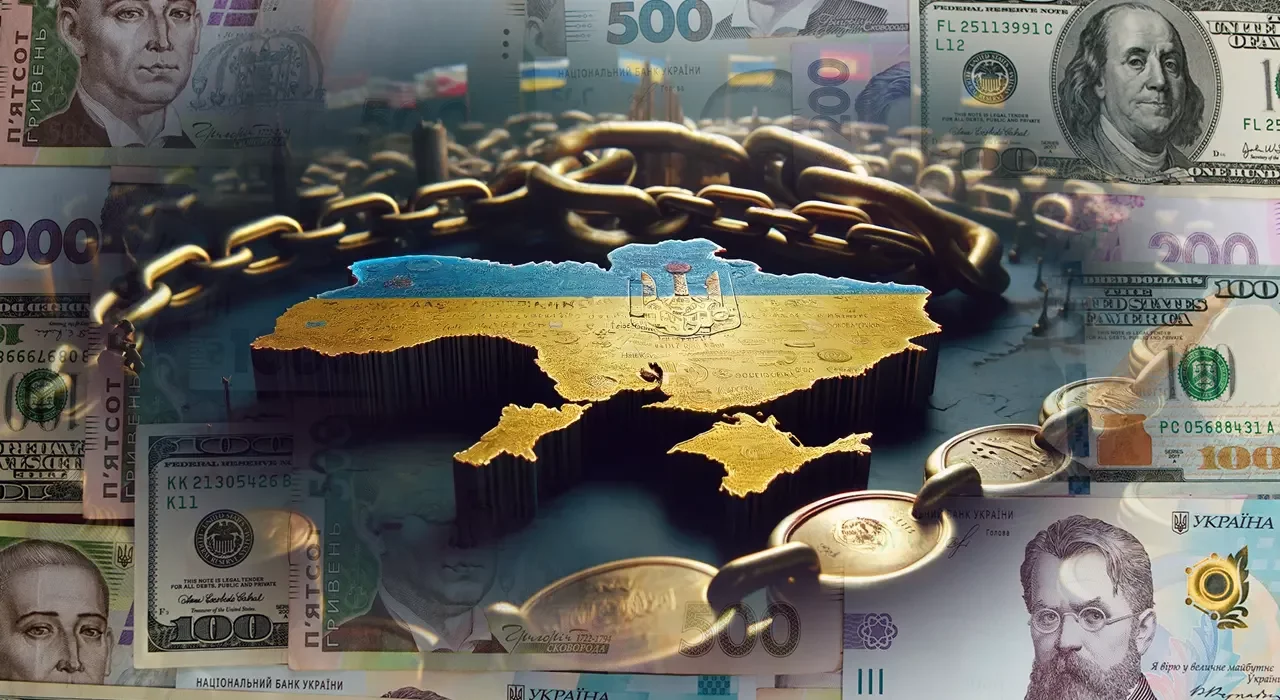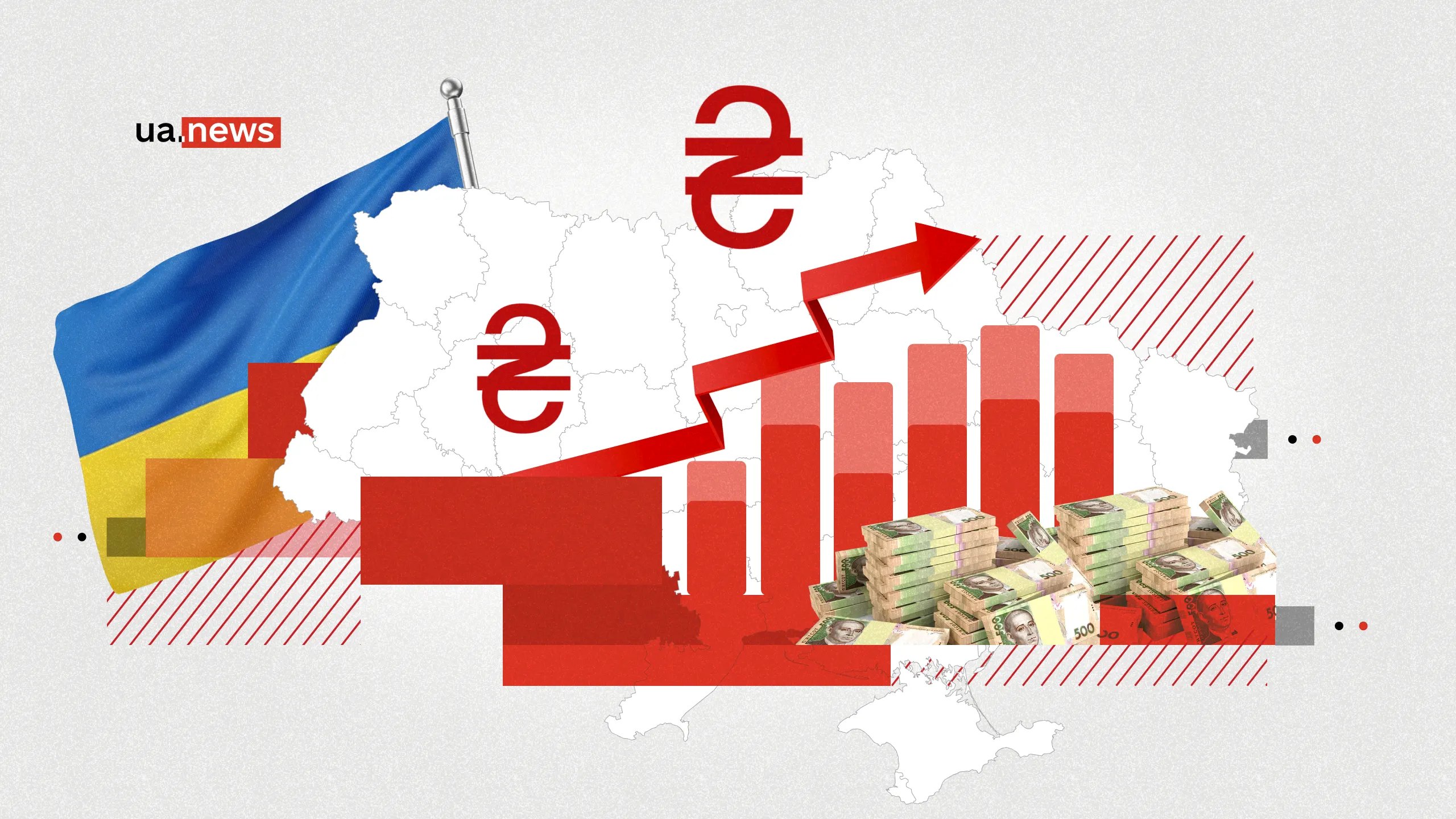“The ratio of public debt to GDP is one of the most important indicators of the financial stability of any national economy. However, Ukraine’s debt burden as a result of full-scale aggression has already exceeded 100% of GDP, which is traditionally considered a psychologically and economically critical threshold. This fact, against the background of the general military and economic complexity, looks like a rather gloomy factor that potentially threatens the future macro-financial”, — write on: ua.news
The ratio of public debt to GDP is one of the most important indicators of the financial stability of any national economy. However, Ukraine’s debt burden as a result of full-scale aggression is already high exceeded the mark of 100% of GDP, which is traditionally considered a psychologically and economically critical threshold. This fact, against the background of the general military and economic complexity, looks like a rather gloomy factor that potentially threatens the future macro-financial stability of the country – especially considering negative forecasts further growth from the IMF.
However, there are radically different views on the problem of the Ukrainian national debt. Pessimistic analysts point out that debt that grows in the face of active hostilities and colossal destruction is a direct path to default and a financial disaster scenario. They emphasize that for countries that are not issuers of world reserve currencies and have limited access to capital markets, exceeding the mark of 100% of GDP is a “death sentence.” More positive experts argue that everything is not so terrible, and the current high debt figure is an inevitable fiscal sacrifice paid for the survival of the state.
What is Ukrainian national debt today, how was it formed and how critical is its impact on the future of the economy? UA.News political columnist Nikita Trachuk discussed the issue together with experts.
“Portrait” of Ukrainian national debt-2025
The public debt of Ukraine includes both direct public debt (obligations directly to the government) and government-guaranteed debt (potential obligations that can be transferred to the budget if the main borrower cannot fulfill them). This aggregate indicator has become a key barometer of the country’s fiscal stress.
According to the Ministry of Finance, at the end of 2024, the total state debt of Ukraine reached a new historical maximum. In dollar terms, it amounted to more than $166 billion, which is $22.7 billion, or 14.3% more than in 2023. In hryvnia equivalent, this volume exceeded 6.9 trillion hryvnias. Such a colossal amount demonstrates an unprecedented level of “fiscal mobilization” caused by the need to cover the military deficit. At the same time, the direct state debt — which is the most burdensome — amounted to $159.2 billion, or 95% of the total amount.
The key vulnerability of the Ukrainian debt portfolio lies in the dominance of the external component. Its growth is a direct consequence of the fact that the country’s military budget is almost entirely financed by international aid, which is mostly provided in the form of soft loans and loans from key Western partners. Although preferential conditions ensure a low cost of service, they do not reduce the nominal volume of obligations in “hard” currency.
A high share of foreign currency debt (over 60%) creates a serious systemic vulnerability. Any more or less significant fluctuation of the hryvnia exchange rate, caused by military and economic factors, instantly leads to to the growth of the debt load in the national currency, increasing fiscal pressure on the budget and increasing risks. Managing this excessive debt burden requires active anti-crisis measures, the main of which is the partial restructuring of external debt, which Kyiv constantly negotiates with its partners.
That is, the Ukrainian authorities are actively transferring a significant part of the debt burden to the post-war period, to “sometime later”, providing the country with the necessary financial “breathing” here and now. This confirms that the situation is under, albeit very conditional, but still control

The evolution of the growth of the Ukrainian national debt
The history of the national debt of Ukraine is a demonstration of a number of cycles of accumulation and restructuring. In general, this process was conditionally stable throughout the years of independence, although it constantly showed an upward trend. However, the sharpest jump occurred after 2014 and acquired unprecedented scale after 2022, when full-scale Russian aggression began.
Until 2014, the debt burden fluctuated, reflecting the weakness of fiscal discipline and the structural problems of the economy – which, however, do not bear any comparison with what we have today. The annexation of Crimea and the start of hostilities in Donbas in 2014 led to a significant deterioration of the macroeconomic situation and the first wave of the debt crisis, which was resolved by the restructuring of commercial debt in 2015 under the leadership of the then Minister of Finance Natalia Yaresko. This operation, known as the so-called “GDP Warrants Yaresko” which included partial write-offs and postponement of payments due to restrictions on GDP growth, became an important precedent for further debt operations.
After a period of relative stability accompanied by moderate economic growth and recovery from the 2014-2015 crisis, Ukraine entered a full-scale invasion with a fairly modest debt ratio. At the end of 2021, the national debt was 43.3% of GDP. This is quite a lot, but at the same time it is absolutely not critical. The general situation was more or less controlled and calm.
However, the full-scale invasion of Russia in 2022 provoked a real “explosion”. The sharp jump in the debt ratio is due to two main factors: a sharp contraction in GDP of more than 30% over several quarters and a huge increase in the budget deficit caused by defense financing needs. The ratio of state and state-guaranteed debt to GDP increased from 43.3% at the end of 2021 to 79.4% at the end of 2023 — that is, almost twice.
In absolute numbers, growth looked even more catastrophic. The national debt increased by $13.4 billion in 2022 and by $33.9 billion in 2023, continuing to grow by another $22.7 billion in 2024. Yes, in essence, this was a payment to preserve our own statehood. Although this fact justifies the high level of debt from a political point of view, it does not relieve the extremely heavy fiscal burden that will have to be serviced for many decades after the war.

State Debt of Ukraine: crisis — or a diagnosis?
There is a fairly common comparison of Ukraine’s debt burden with countries where the debt makes up hundreds of percent of GDP, but these states live peacefully and develop. Most often, the USA is cited as an example, the public debt of which amounts to an absolutely astronomical amount of more than $38 trillion.
This approach is flawed and does not take into account key structural differences that make the Ukrainian situation much more risky. The huge debt for Ukraine is not just a big number, but a diagnosis of structural problems in the economy.
First, you cannot compare Ukraine with the United States. The US, as the issuer of the dollar, the world’s reserve currency, has the so-called “extraordinary privilege.” This allows them to finance their debt at low rates. Essentially, this is done at the expense of world demand for their currency, and they are not exposed to the risk of a foreign payment crisis, as they can print their own currency almost as much as they want. Ukraine is not a dollar issuing center and does not have any such privileges.
Second, comparisons with EU countries such as Italy or Greece are also misleading. Although these countries have extremely high debt levels, they are part of a strong monetary union. Rome and Athens benefit from the collective financial support of the European Central Bank, which ensures a deep and stable internal capital market. Their resilience is collective, interconnected. Ukraine, on the other hand, remains a sovereign economy with high risk, struggling for survival and having limited access to private capital markets.
One of the most critical problems for Kyiv in the context of a significant national debt is currency vulnerability. Because of it, the economy remains extremely sensitive to exchange rate fluctuations. In other words, the devaluation of the hryvnia instantly increases the burden of debt service in the national currency, increasing fiscal pressure.
Also, a high debt burden leads to a limitation of fiscal space. Accumulation of liabilities makes it necessary to make significant interest payments annually — and they are financed at the expense of the budget. In a country that needs colossal investments in recovery and security, this means that resources are diverted from infrastructure, defense and social programs, which are much more important to the state and people.
In addition, the constant growth of debt increases Kyiv’s already huge financial dependence on foreign creditors. Since Ukraine cannot finance its deficit on its own, high debt means that access to external funds is accompanied by strict conditions on structural reforms. This actually means the loss of a significant part of sovereignty, when debt policy becomes an instrument of external influence on the domestic situation.
To prevent the scenario of a complete disaster, Ukraine must adhere to the sustainability targets set by the IMF. And they include reducing the debt-to-GDP ratio to 82% by the end of 2028 and to 65% by 2033. This is possible only if the war ends, which, unfortunately, is not visible on the horizon. And the forecasts of the IMF for 2026, according to which the national debt of Kyiv will exceed 110% of GDP, making the achievement of sustainability targets something of a fantasy.

Opinions of experts
Economic expert Oleksiy Kush assesses the indicators of the national debt of Ukraine in a negative context. He believes that this is a serious problem for the Ukrainian economy.
“The debt rubicon has been crossed. According to the Ministry of Finance, as of August 31, 2025, the state and state-guaranteed debt of Ukraine amounted to UAH 7,945.72 billion, or $192.58 billion, namely: state and state-guaranteed foreign debt — UAH 5,984.3 billion (75.31% of the total amount of state and state-guaranteed debt), or $145.04 billion, state and state-guaranteed domestic debt — UAH 1,961.42 billion (24.69%), or $47.54 billion. According to analysts’ forecasts, the GDP of Ukraine in 2025 may amount to approximately $200 billion.
But the debt level will increase by the end of December. So, we can actually officially say that the state debt mark of 100% of GDP has been exceeded. Not only the size of the debt is important, the number one problem is the cost of servicing it, which is about 15%. These will be weights on the legs of the Ukrainian economy after the war, which will not allow quick debt repayment and debt servicing. And if there are concessions during the war, it will be a really critical indicator in the future. Ukraine will have to carry out real restructuring and partial debt write-off”, – Oleksiy Kush is confident.
But the economist Oleg Pendzyn assesses the situation not so bleakly. He believes that today is not about any catastrophe.
“Look, Japan’s public debt is 250% of GDP. Do any of the Japanese say it’s a disaster? But hardly. In the USA – 130% of GDP. Is it a disaster? No. It is not about whether it is a disaster or not, what it should be and so on. It is about the cost of servicing the debt. When we talk about the cost of its maintenance, this is a defining thing that should be paid attention to and analyzed. We had 60% before the full-scale invasion began. What grew later grew under very favorable conditions for Ukraine. That is, there are very low rates and generally good conditions. So I don’t see it as a problem. And this is not a catastrophe for today. We have a war, we are fighting, this is the key problem. Debt burden is the only way today to meet defense needs. You either live or you don’t, that’s all.” Oleg Pendzyn explained to UA.News.

In summary, Ukraine’s debt situation at this stage is still a controlled crisis, but this control is external and very conditional. It is ensured exclusively by the support of partners, preferential terms of most loans and constant restructuring, i.e. the postponement of the debt on the shoulders of future generations.
At the same time, the risks of disaster remain high, as the fundamental structural problems exacerbated by the debt burden persist. And if tomorrow international partners suddenly change their mind and stop financing Kyiv, it is easy to guess what will happen to the economy in a few months.
The only way to financial stability and reducing the debt burden is accelerated and sustainable economic growth, which must significantly exceed the cost of servicing the debt. However, in the conditions of war, this is impossible purely physically.
